Text
Tokyo-Ga ****

Wim Wenders’ dreamlike “Tokyo-Ga” drifts through modern Tokyo (circa 1985) searching for the source of Yasujiro Ozu’s film oeuvre. And finds it, on the headstone of Ozu’s grave: the Chinese character Mu, which Wenders renders as emptiness, nothingness.
Meanwhile, he takes us to the pachinko parlors we remember so well from Sofia Coppola’s later “Lost in Translation”, and tunnels deep into our subconscious with long, moody shots of trains as well as streetscapes, seen from on high, composed of overlapping lanes of human transit.
One fascinating sequence is pure documentary: a factory making convincing wax replicas of food, for display in restaurant windows. This reminds me of the Japanese documentaries of John Nathan, best-known as the English-language translator of Yukio Mishima, but also an earthy guy brought low by his gift for cinema. You can see his gently amazing 1978 documentary “The Blind Swordsman” in the Criterion Collection’s DVD set “Zatōichi: The Blind Swordsman”. Nathan, who’s a pal, recently referred me to Masaki Kobayashi’s 1962 “Harakiri (Seppuku)”, which you should see right away.
For the most part, though, Krundt has wandered blind into Japanese cinema, always at risk of an unforeseen sword-slash, or worse, a ruinous reflection of my own moral failure. Having gone to college, I’d heard of Kurosawa, but that was about it.
Here’s where the Japanese journey has led me during the last year:
“Sansho the Baliff” - I found that humans have little sympathy for things that don’t directly concern them. They’re ruthless. Unless those hearts can be changed, the world you dream of cannot come true. If you wish to live honestly with your conscience, keep close to the Buddha. (See also NY Times on a Mizoguchi revival.)
“Chûshingura” - An excellent version of the much-told story of the 47 Ronin, most recently murdered by Carl Rinsch with Keanu Reeves.
“Drunken Angel” - Kurosawa’s exploration of mercy, as a brutal yakuza falls prey to tuberculosis.
“Samurai” – Inagaki’s Eastmancolor trilogy starring Toshirô Mifune as the ardent student of the samurai way, with a nice tension of sincerity and schtick.
“Ponyo” and “Nausicaä of the Valley of the Wind” – two by Hayao Miyazaki, the great animator who cruelly has declared his early retirement.
For more on the samurai path, read Hagakure. For the living practice of martial arts, I recommend Peter Ralston's Cheng Hsin.
If you need a great documentary that explains everything, see “Project Nim”.
And if you want to know what led Krundt to “Tokyo-Ga”, see Mark Cousins’ wide-ranging, idiosyncratic, 15-episode TV series, “The Story of Film”. Two more rich sources of film recommendations are “Side by Side”, narrated by the seemingly inescapable Keanu Reeves, and the American Film Institute's supremely gorgeous “Visions of Light”.
-- --
See also:
The End of Summer
The Bling Ring
Farewell My Queen
21 Movies Worth Watching
Must See Much Missed Movies
Holy Motors & Cosmopolis
Dance Conspiracy
Francesco Rosi
Editorial Policies
The Roots of Human Behavior
Complexity
#tokyo-ga#wim wenders#ozu#Yasujiro Ozu#Sofia Coppola#lost in translation#pachinko#john nathan#yukio mishima#zatoichi#harakiri#film#films#seppuku#Krundt#Roland Krundt#kurosawa#ikiru#sansho the bailiff#chushingura#47 ronin#carl rinsch#keanu reeves#drunken angel#samurai#inagaki#toshiro mifune#ponyo#nausicaa#miyazaki
3 notes
·
View notes
Text
French Cancan ****
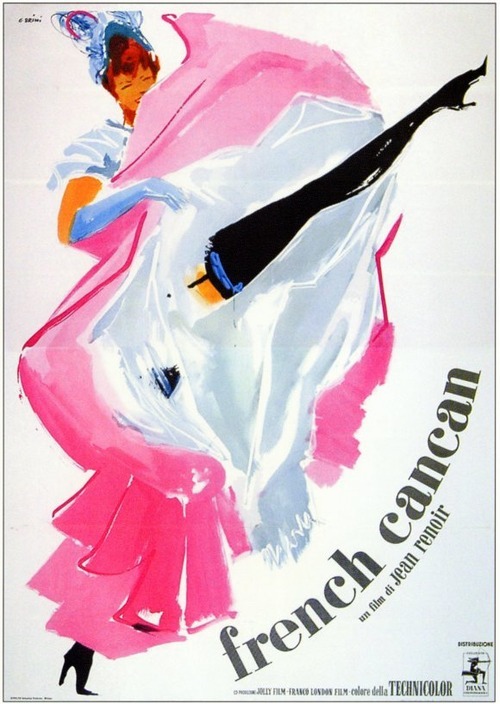
Pigalle, 1889: We’re backstage, opening night of the Moulin Rouge, in Technicolor. Nini, the fascinating gamine plucked, like Zouzou, from the obscurity of a laundry to star in the show, now refuses to go on. She has just seen her lover, the broke-but-brilliant impresario Danglard (Jean Gabin), smooching with the new act, a Piaf-ish singer named Esther. Off-screen, the audience is losing patience – they want le can-can! By Nini’s dressing room door are gathered Danglard, Lola de Castro – a va-va-va-voom entertainer and, until Nini, Danglard's lover – plus Nini’s vulgar, outraged mother, who insists that the show must go on, and of course the whole troupe of gorgeous can-can dancers dolled up in fanciful, jewel-tone costumes for their big number with Nini. This is the moment when “French Cancan”, Jean Renoir’s 1954 spectacle about the creation of the Moulin Rouge, stops horsing around and starts taking itself seriously.
The big finale begins:
Nini (hurt): I’ll stay on one condition. I want Danglard all to myself.
Danglard (enraged): You want to put me in a cage, like a canary? HE STAMPS HIS FOOT. I warn you, it won’t last long! You couldn’t stand me after a couple of weeks. You want the Danglard of the theatre, or a Danglard who wears slippers? I’ve never worn them and never will! I’ll give you some good advice. If you want a lover, [Prince] Alexandre’s perfect. If you want a husband, marry [lowly assistant-baker] Paulo. Choose between jewels and palaces or a happy retirement by the fireside with honor and dignity – but I can’t give you either! Do I look like Prince Charming? Only one thing matters to me – what I create. And what do I create? You! HE TURNS, POINTS TO LOLA. Her! There have been others before. There’ll be others to come. In the end, you think it matters what you and I want? POINTS BACK TOWARD THE STAGE AND THE AUDIENCE. All that counts is what they want. We’re at the service of the public. You know why it breaks my heart to see you go? They can smash the place to pieces for all I care! But the profession is losing a good trouper. I thought you were one of us. If not, get out!
This, mes amis, is what they call entertainment. The movie’s final minutes burst bright as confetti shot from a cannon: leaping dancers with frilly petticoats raised high, horny aristocrats goggle-eyed under top hats, pickpockets making fortunes, everything awhirl – and backstage, the great Gabin, as Danglard, sitting alone on a cheaply gilded chair – a pauper’s throne – listening to the music, the sound of dance, the enchanted audience, seeing it all with an inward eye. It’s a triumph – for Danglard, and for Renoir. When the credits roll, you are dazed with delight.
Who wouldn’t want to be a sexy, charming, French theatrical impresario just like Jean Gabin? I discovered this soulful actor decades ago, in “Pépé le Moko”, still one of my very favorite films. Gabin is always strong but often hurt, dominant even when wounded, as sensitive as any woman and as tough as any man. A tragic figure, usually. I love this guy. Turns out, sweetly, that he launched his own show-biz career from the Moulin Rouge, a boîte that still exists, more or less.
The idea of the Moulin Rouge, well expressed here, was the thrill of slumming, giving the upper classes a taste of the rude fun that the yobs in the gutter enjoyed – only at higher prices. Sex and diluted criminality were the draw. Originally the can-can, in which dancers raise their skirts and legs high to reveal their knickers and heaven knows what else, was performed by courtesans, as a sort of appetizer to arouse client interest.
Danglard is a fictional version of Joseph Oller, who co-founded the Moulin Rouge and also owned Paris’ famed Olympia music hall, where Johnny Hallyday and the Beatles later played. (By the way, Oller also invented pari-mutuel betting.)
The story of the Moulin Rouge – so appealing it has been told in twelve films, not counting documentaries – draws from a deep well. Just as the U.S. has its tradition of backstage films, from “The Gold Diggers of 1933” to “All That Jazz” (another Krundt favorite), so the music halls of Europe gave rise to a robust film tradition that looks fondly backstage. In Europe, the idea of a theatrical meeting ground for rich and poor was particularly amazing: Between the strictly stratified classes of European societies in the late 19th and early 20th centuries, such contacts were rarer and more exciting than in a theoretically egalitarian America. Where the fault lines between classes appeared, great writers such as Balzac and Zola observed the grinding of one niveau against another, making it into myth.
And so the tasty hash that is “French Cancan” mixes leftovers from the whole rich table of European culture, film included. From Germany, for instance, “The Blue Angel” and “The 3 Penny Opera”. From France, Renoir’s own “The Lower Depths”, based on a play by Gorki and later remade by Kurosawa – and, of course, “Les enfants du paradis”, yet another Krundt all-time fave. The spirit of “French Cancan” is cheerful appreciation of the whole corny idea of popular entertainment, the modest valor that Gabin embodies, and an open-hearted, profoundly democratic favor for any kind of crap that might unite us in joy.
It’s fun to watch the rich guys in tailcoats shout, Copper’s crashed in New York! We’re ruined! It’s charming when Nini, primly expecting to be ravished by Danglard during their first appointment that evening, rushes to the bakery during the afternoon, delivering her virginity intact to her boyfriend Paulo. We love every minute Lola de Castro is onscreen, played as a fiery temptress by the Mexican María Félix, whose credits include “The Kneeling Goddess”, “Woman Without A Soul”, and “The Devil is a Woman”. The idea here is for all of us to spend an amusing night together, and then go to Les Halles at dawn for an onion soup before bed. Those were the days, my friend.
Les Halles is long gone. It was still there in 1965, though, when my family visited Paris and my friend Kenny came along. This was the pre-feminist era, when our routine exploitation of women might evoke shame, but not guilt. Our first day there, my mother was meeting some friends, so she left Kenny and me on our own. Do whatever you like, she said. Just one rule – don’t go to Place Pigalle. Kenny and I emerged from the Métro at Pigalle less than an hour later. We saw our first striptease before lunch, in a basement joint with three tables wedged against a stage barely bigger than a table top. Afterward we bought ourselves a dirty movie on 8mm. Once we got home, Kenny stole a projector from school. Turned out the film showed a zaftig lady, not particularly young or beautiful, posing by a cold, windy seashore with her shirt off. Somebody, lend this lady a coat.
-- --
See also:
Susana
X-Men Who Hate Women
Farewell, My Queen
Vengeance
Life by Keith Richards
The Great Gatsby
Kismet: Preston Sturges and Claude Lelouch
Blow-Up
Night Train to Munich
Dance Conspiracy
Le Trou
The Earrings of Madame De...
Forbidden Games
Paris 1919
Super 8
The Artist - Oscar's French Homage Smackdown and Shaggy-Dog Cinema Salad
#film#jean renoir#jean gabin#moulin rouge#olympia#piaf#zouzou#josephine baker#joseph oller#balzac#zola#les enfants du paradis#maría félix#technicolor#dirty movie
1 note
·
View note
Text
All is Lost *****

Here’s what I don’t understand: When you are all alone in a sinking sailboat a thousand nautical miles from anywhere, why bother to shave? This is one of the many existential questions wordlessly posed, and to some degree answered, in J.C. Chandor’s exquisite survival film, “All is Lost”. Robert Redford plays Our Man, solo sailor of the yacht Virginia Jean. As the story begins, the Indian Ocean is pouring in through a gash in the starboard hull.
Things get worse from there.
“All is Lost” is a study of self-reliance, human ingenuity, and the will to live. It’s harrowing to watch Redford suffer through a seemingly endless series of catastrophes. Audiences who know this actor only from his forgettable recent roles in “The Company You Keep” or “Lions for Lambs” may not appreciate what they’re seeing here. For moviegoers old enough to have seen “Butch Cassidy and the Sundance Kid”, “Downhill Racer”, “The Candidate”, "The Sting", “Three Days of the Condor”, and “All the President’s Men” in their first runs, Robert Redford has become a part of ourselves, absorbed somehow into our own identities. Now at sea at 77, Redford abandons his careless grin. He suffers the physical rigors of his role with the anguish and labored breathing of a virile but exhausted old man. We suffer with him. The only thing that keeps us going is the certainty that this role will win Redford his first Oscar for acting.
Chandor, who wrote and directed the film, is a talent of colossal proportions and a storyteller strangely drawn to wreckage. As you may recall, Krundt adored his debut picture, “Margin Call”, about the collapse of a Lehman-like investment bank. That film successfully dramatized the 2008 global financial crisis through one long, painful night of meetings, investigations, and executive deliberations. As Oliver Stone and many others have demonstrated, such subject matter usually produces dismal films. But Chandor, as if seeking to prove the validity of Aristotle’s Poetics, used the three unities of action, place, and time to compress the dark, stinking goop of Wall Street chicanery into diamond-sharp entertainment.
In “All is Lost”, Chandor relaxes the unity of time, permitting the tale to stretch out over eight days. But he tightens everything else. The movie has only one character: Our Man. With the exception of one favored syllable uttered late in the film, the only spoken words occur right at the beginning, as Redford reads Our Man's last testament in voice over. All the action takes place on or about Our Man's vessel, and the action is all about survival.
If "All is Lost" is not your idea of a date movie, tough. It's one of the best movies you’ll ever see and probably the best disaster-at-sea movie of all time. It puts to shame "Titanic" and “Cast Away”, outshines “Life of Pi”, and outdoes Buñuel’s “Robinson Crusoe”, delivering more suspense than Hitchcock’s “Lifeboat” and more drama than the Spencer Tracy classic, “The Old Man and the Sea”.
Voyaging alone across the vastness of the sea, relying only on himself, skilled in any number of maritime arts, keeping cool as inrushing waters drown his boat, trusting his determination to surmount every difficulty, Our Man is worth knowing. He intends to live. You can see that, late in the film, when he bandages a deep cut on his forehead: He has work to do and doesn't need the distraction of an open wound.
Unlike the tormented, cuckolded Owen Browne of Robert Stone’s novel Outerbridge Reach, a fellow of similar fate, Our Man reveals himself only in action. We know almost nothing about him in a biographical sense. Yet somehow Chandor and Redford lead us into his soul.
Among the movie’s many pleasures are a soundtrack composed of water, weather, heavy breathing, and subtle music. The visual details are memorable: sneakers, shark, ships, fire, flares. The sight of the living world beneath Our Man's craft is ironic in its beauty. And the credits are charming, citing such obscure marine functions as Shark Chum Thrower – now that’s a glam job! – as well as a list of the crew’s favorite restaurants in Baja California, where the film was shot.
As for why Our Man bothers to shave in the face of death – maybe that’s just the kind of guy he is. Makes you wonder what kind of guy I am.
You may wonder, too, whether "All is Lost" will attract the audience it deserves. It's got a terrific title – so long as you're not trying to sell tickets. Who wants to pay for despair? Hey, here's a party game: Try to think of a less enticing movie title. How about... um... "Margin Call"? That picture, though great, made no money. Now, Chandor's wreckage-wrought sophomore flick may be foundering commercially. I fear the worst.
-- --
See Also:
Margin Call
127 Hours
Oscar Roundup 2013
Much Missed Must See Movies
The Impossible
Bond James Bond
Moonrise Kingdom
Francesco Rosi: Cadaveri eccellenti & Christ Stopped at Eboli
Arbitrage
Daylight
21 Movies Worth Watching
Of Gods and Men
War
Hereafter
Complexity
#All is Lost#Robert Redford#J.C. Chandor#Chandor#survival#film#Margin Call#Robert Stone#Outerbridge Reach#shark chum#disaster#catastrophe
7 notes
·
View notes
Text
The Bling Ring ****

There’s so much to learn from Sofia Coppola’s “The Bling Ring”, it’s almost educational. This amped-up reimagining of a Vanity Fair story, accessorized with day-glo titles and a hip-hop soundtrack, delivers privileged, Oxycontin-smoking high schoolers – great at clothes, maybe a little light on the cognitive thing – who burgle $3 million from the homes of such loot-rich superstars as Paris Hilton, Orlando Bloom, and Audrina Patridge. Did you know that famous people in L.A. either don’t lock their houses or leave keys for robbers under the doormat? Did you know that people smoke Oxycontin? That Audrina Patridge even exists? That young women say Bite me and Suck my dick to one another? That some people devote entire rooms to just shoes? That the place to look for valuable stuff is under the bed? That Paris Hilton’s home-décor tip is pictures of herself? That bragging about your criminal activities on Facebook can get you in trouble? And what about this bit of timeless fashion wisdom: You can’t have leopard and zebra. You got to choose one. I mean – who knew?
If you don’t think about it, “The Bling Ring” is just fun, like eating Gummi Bears while watching “Breathless”. The teenage thieves here are not ridiculously good-looking, but they’re attractive enough and fun to watch, especially Vera Farmiga’s younger sister Taissa, whom we’d admired in “Higher Ground”. The action is all about self-indulgence and pretty things, so that’s good, right, whether we’re clubbing or taking selfies or stealing Chanel or playing with a gun? The film making is quiet, a little scratchy, and when it does call attention to itself, as in the single long shot depicting the robbery of Audrina’s glass house, or when we’re watching a grey steel prison gate roll closed, it’s sweet.
Coppola doesn’t trouble us much with school or adults or any of that kind of shit: The movie mostly is about what the group is into, off by themselves, indulging their impulses, unobserved except maybe in the green glow of night-vision security cams at the homes of the people they rob, plus, of course, by us. The core group is four girls and a guy, and their dynamic works great because all the girls are skinny and look good in clothes, and the guy doesn’t seem to be especially sexual. (He's more into shoes.) They hardly ever argue with each other. It’s easy to imagine all the people living life in peace when one girl can say to another, with perfect sincerity, Your butt looks awesome. I mean, if everyone's butt looked like that, there’d be no conflict anywhere, right? Plus these young people are such a sunny bunch, stoned out of their minds, authentically happy about money and drugs and all their new possessions, genuinely glad to be so pretty, and if they get ripped off selling stolen Rolexes to a fence, or if they crash a car, or whatever, really, Who cares? It’s like: just the buzz. What Tom Wolfe called maintaining an even strain.
Of course our cuties get caught – otherwise it wouldn’t be a story, right? And naturally that kind of wrecks everything. The way the movie’s put together, everything’s wrecked in advance, so we know how it’s going to end before it's half-begun, though there’s still plenty of stuff we couldn’t possibly imagine, like how enormous and visually interesting the bellies of those two guards standing outside the courtroom would be. Actually, the point is, we couldn’t imagine how any of this would turn out, because it’s all so 21st Century, because these kids are so incredibly stylish, so cool with being fuckups, so ready for their moment on television.
By the end, sad to say, lots of adults crowd onto the screen: cops, parents, TV personalities, random criminals in orange jumpsuits. Here’s where the imagery gets interesting and it gets harder to avoid that spark of cognition. You can't help noticing stuff, like how there’s Buddhas where there's no Buddhists, not to mention how incompetent all the parents are.
Okay, let’s acknowledge that Leslie Mann, as the mom who home-schools Farmiga and Emma Watson with a curriculum based on the philosophy of The Secret, is way over the top, as usual.
But you’ll be haunted by the breakfast scene in the gigantic, putty-colored kitchen of Chloe (Claire Julien), who’s cast as the one perfect California blonde in the group, as required by statute. Aside from Chloe, we’ve never seen these people before: Dad in a suit, isolated at a table, back to the room, reading a newspaper. Two horrid matched white fluffy doggies panting on the floor by his chair. Mom, every bit as skinny and blonde as Chloe but way more Playboy, situated at the far side of a vast, ornately buttressed, stone-topped table. Behind her, ignored by everyone, the Hispanic maid at work.
The most gruesome thing here, as in all the kids’ houses, is that none of the parents spends an instant grappling with the obvious troubles of their offspring. It's not that the parents don't discipline their kids; it's that, deep down, they have no authority. They seem to know nothing relevant to actual life. When Watson’s character, Nicki, is handcuffed and hauled off to a police cruiser, she yells over her shoulder, Mom, call a lawyer! And of course that’s just what Mom does. (If you haven't already, see "To Die For".)
What happens, almost inevitably, is you catch yourself thinking about what you’re seeing onscreen. That’s when the experience pivots from a real good buzz to some kind of moral experience or something. That's a total bummer, obviously. It feels so bad it makes you wonder whether there’s something wrong with Sofia Coppola, since by definition there can’t be anything wrong with you or me.
Maybe you remember Coppola's performance as Mary Corleone in “The Godfather Part III”? Obviously there’s something wrong with her, or at least with the way she was raised. Isn't that almost her brand?
Over time, you notice how all her movies are the same. I haven’t seen “The Virgin Suicides” but look at the others: “Lost in Translation” – American movie star alone and awake in the middle-of-the-night vacuum of a Tokyo luxury hotel. “Marie Antoinette” – Austrian teen adrift in glitzy Versailles, heading for the guillotine. “Somewhere” – between-roles actor alone, awake, and adrift at the Château Marmont. Now, “The Bling Ring” – feckless teens, awake and adrift, invading the glitzy homes of absent actors. It's as if Coppola's got just five Lego blocks to play with.
Each of these movies is brilliant. All are about the weirdness of being alive, the emptiness and anomie that can ruin lives of privilege, the tension between vivid sensation and numbness that translates onscreen into brilliant colors and empty people. “Bling” is emptiness cubed, anomie on cocaine. It’s as if Coppola wants to be our Samuel Beckett, keeping all the grim comedy and life-without-meaning, but adding cuter colors and Manolos.
-- --
See also:
Farewell My Queen
21 Movies Worth Watching
Dance Conspiracy
Oscar Roundup 2013
Bond James Bond
Moonrise Kingdom
The Five Year Engagement
Tiny Furniture
Holy Motors
Daylight
Blow-Up
Source Code
Reprise
Dead Man
Editorial Policies
The End of Summer
Barbarella
Cloud Atlas
Being Wrong
War
#the bling ring#Sofia Coppola#vanity fair#oxycontin#paris hilton#orlando bloom#audrina patridge#facebook#breathless#vera farmiga#taissa farmiga#tom wolfe#even strain#leslie mann#emma watson#the secret#claire julien#the godfather#richard avedon#virgin suicides#marie antoinette#lost in translation#somewhere#chateau marmont#samuel beckett#manolo blahnik#film#Krundt
4 notes
·
View notes
Text
Susana *****

Maybe the best she-devil exploitation flick I’ve ever seen, Luis Buñuel’s “Susana” is a small marvel of disciplined craft and suppressed glee. Made on the cheap in 1950, in black and white, during Buñuel’s long apprenticeship in Mexico, “Susana” honors the codes and clichés of its genre without a smirk, delivering a tightly-constructed commercial entertainment about the dangers – no, amigos, the horrors – of unbridled female sexuality.
Yet somehow the director’s characteristic point of view – anti-clerical, anti-bourgeois, destructive, life-loving, and amused – gleams through this muck, much as a projector’s light penetrates images unspooling on film. What we see onscreen, always, is the illusion of unlike things, pictures and light, fused into one. This is what cinema is (or was, pre-digital), and nobody did it better than Buñuel.
His “Susana” fuses the conventions of Mexican schlock melodrama with the distinctive vision of a 50 year old filmmaker whose first picture, a 1929 collaboration with Salvador Dali, had created an international sensation. Here, Buñuel illuminates a hack's assignment with the distanced, devilish perspective of an absurdist. Mildly shocking and quietly hilarious, "Susana" is not the self-conscious camp of a John Waters or Tim Burton, but something earlier, earthier, higher, more pure: a B movie by Buñuel.
Simple white titles over a dark, cloudy sky. Night. Lightning and thunder. Fake rain. Eerie violins. A gloomy building: REFORMATORIO DEL ESTADO. Inside, Susana herself, vividly portrayed by Rosita Quintana: gorgeous, thick-haired, curvy, seething with life, furious to free herself. She’s being manhandled – woman-handled, actually – down a hallway and into a horrible basement cell. Susana fights every step, writhing and cursing. With a sound of doom, the cell door locks behind her.
Caged, Susana glances up: She sees what looks like a stuffed bat hanging by its feet, its wings creepily, if unrealistically, outstretched. Glancing down, she sees rats scuttling in the straw by her feet. Crazed with horror, Susana turns to the cell’s only window, attacking its thick bars with all the force of her being, crying out to God for release.
Now Susana notices something else on the straw-covered floor: a projection of outside light coming in through the cell’s window. There, on the floor, seen from a strange angle, is the illuminated image of a Christian cross, constructed of shadows thrown by the imprisoning bars. Inspired, or perhaps enraged, Susana cries out:
Dear God, you made me the way I am, just like scorpions or rats. Lord of all jails, have mercy on me! Throw down the bars, the walls. Let me feel the air, the sun. I have as much right as a snake, or this spider. God have mercy. Grant me a miracle if you can! Get me out of here! Get me out of here!
Next thing you know, the window’s bars come loose! A miracle indeed – whether of God or the devil we may wonder. Low creature that she is, Susana crawls out through the window on her belly, into mud and dark rain, delirious and free. It goes without saying that her clothes cling in the drenching wet, that we become ever more aware of Susana as a woman – not to mince words, as an object of male lust.
Somehow, she finds her way to the estancia of Don Guadalupe (Fernando Soler), a mature, lordly embodiment of integrity and wisdom. Inside, as dinner is prepared, Buñuel introduces the principal characters: Doña Carmen, wife and mother, a confident, handsome woman easing gracefully into plump middle age. Felisa, the comically superstitious maid, a peasant closer to nature than her employers, who alone recognizes devilry for what it is. Alberto, the son, an unawakened university student on the cusp of manhood. Finally, the estate’s swarthy, broad-shouldered manager, named Jesus (of course), whose magnificent sombrero and tight trousers call our attention to his brimming masculinity.
Before you know it, the innocent family grants Susana a secure position, as a servant in their prosperous household. Instead of showing gratitude, this viper scorns her duties and treats the women hatefully, while enchanting all the men. Looking to rise in life, Susana forever is lowering the top of her blouse, revealing creamy shoulders and swelling bosom to Don Guadalupe and his heir. She shows no interest in the Priapic Jesus, who may be her match sexually and is plenty interested in her. Susana doesn’t want sex. She uses it, because it’s all she’s got.
By the end, the righteous have revealed their true natures. Don Guadalupe, ruined by lust, prepares to betray everything he stands for. In a memorable point-of-view shot reminiscent of Hitchcock, Doña Carmen, hitherto good-hearted and kind, whips Susana without mercy. Ultimately, Susana is dragged away through the dirt, giving us one last look at her marvelous legs. Buñuel dutifully sketches a conventional happy ending for the family. But we understand that the devil has won.
— —
See also:
The Milky Way
Blow-Up
X-Men Who Hate Women
The Girl with the Dragon Tattoo
Oscar Roundup 2013
Ed Wood
Bedazzled
Holy Motors
Three Films in Spanish
Le Trou
Barbarella
Francesco Rosi: Cadaveri eccelenti & Christ Stopped at Eboli
We Have a Pope
The Earrings of Madame de…
#film#bunuel#she-devil#exploitation#female#god#devil#cinema#christian#miracle#lust#fernando soler#rosita quintana#sombrero#Krundt
2 notes
·
View notes
Text
Double Feature: Holy Motors ***** & Cosmopolis ***


Two ambitious movies driven by long stretch limos and big stretch ideas: "Cosmopolis" and "Holy Motors". One's kind of interesting, the other's among the best pictures you'll ever see.
Start with "Cosmopolis", the lesser of the two. More or less living in his slow-rolling, pimped-out limousine over the course of a long day and night, Robert Pattinson personifies an idea: the brilliant financial manipulations that generate so much Wall Street wealth and so little real value.
Barely adult and for all practical purposes infinitely rich; powerful, heartless, and aware that he's unawake, this math-geek speculator peers through tinted, soon spray-painted windows at a New York City roiling with anarchic violence and anti-capitalist passion.
The actor's previous success playing a vampire seems to inform his bloodless portrayal of Eric Packer here. Perhaps Packer was a credibly human character in the original novel by the masterful seer/storyteller Don DeLillo; I haven't read it. But in the cold, dead hands of David Cronenberg, nothing here lives. Even cameos by Juliette Binoche, Paul Giamatti, and Mathieu Amalric can't jolt this corpse to life.
Peculiar and well-made, the movie is engaging as a technical exercise in constrained filmmaking, like "Phone Booth" or "Premium Rush". And in fairness, "Cosmopolis" is a whole lot less disgusting than most of Cronenberg's work.
What this picture lacks -- perhaps intentionally -- is the spark of life. Compared to Viggo Mortensen in Cronenberg's "Eastern Promises" or William Hurt in his "A History of Violence" -- angry men of flesh and blood -- Pattinson plays an abstraction. He doesn't mind when hooligans spray-paint his car. His mild curiosity engages only when his life is threatened. He belongs in a freak show.
So let's move on, to a game with much higher stakes: "Holy Motors".
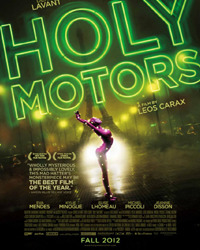
In "Holy Motors", the supple chameleon Denis Lavant spends a long day and night working out of a long stretch limousine. Playing an actor, and credited with eleven roles in this astonishing film, he uses the car as a mobile dressing room. His transformations, achieved with makeup, costumes, and lithe physicality, create a series of characters, each throbbing with life, each convincingly engaged in the real world.
But what is that, exactly -- the real world? By the end of this film, we can be sure we don't know.
In its first minutes, "Holy Motors" sets out its themes in a manner at once straightforward and perplexing. We open with a charming clip of antique cinema. We see an audience in a darkened theatre. A man in pajamas and Marcello Mastroianni sunglasses (played by the film's writer-director, Leos Carax) awakens in the night. He pushes through a hidden door. We enter the black void of a theatre, and dimly see an audience, the tops of their heads crescents lit by the projector above and behind them. Down an aisle dimly defined by two rows of floor lights, lumbers a great dark dog. The shadowy, slow-moving creature, heading toward us, is like unconsciousness itself.
Then our day begins. Lavant appears as Monsieur Oscar, the hardworking fellow with the fine suit and executive briefcase who waves goodbye to his kids and greets several sets of armed guards protecting his shiplike modern home. He enters his limousine at dawn.
His prim chauffeur, played by Edith Scob, crisply informs M. Oscar that he has nine appointments today, calling his attention to the dossiers placed on his seat. Next thing you know, he's talking numbers via the Bluetooth set in his ear, resembling nothing more than a grown-up French version of Eric Packer.
For a moment we may imagine we've found our bearings. But then M. Oscar emerges from the limo and walks onto a crowded Parisian bridge -- in the guise of a crone as old and bent as any in the Grimms' fairy tales. Oh, we think. Something's up here.
Much of the joy in this mesmerizing film is in action and acting. Like the Olivier de Sagazin sequence in "Samsara", "Holy Motors" delights in the fluid uncertainty of human identity and the visceral power of performance. M. Oscar's portrayals are convincingly realized, yet as each character flows into the next, some kernel of identity persists, like the soul that endures through the reincarnations of Hindu theology. Lavant and M. Oscar are, like us, human beings acting: Even in the most grotesque roles, we remain ourselves. As for all the other people out in the world, the presumably normal folks with whom M. Oscar's characters interact, what are they? Actors? Human beings? Souls?
The movie's design dissolves such differences: between cinema and real life, the real and the imagined, performer and audience, between Lavant and M. Oscar, between them and you, between you and me. What Carax achieves in 115 minutes is staggering. In the density of its impact, "Holy Motors" is the artistic equivalent of a thermonuclear bomb.
At one point in the film, M. Oscar plays a scar-faced killer assigned to dispatch his victim with a switchblade knife. All I can say about the astonishing sequence that ensues is that it trumps Vladimir Nabokov's memorable passage in Lolita:
We fell to wrestling again. We rolled all over the floor, in each other's arms, like two huge helpless children. He was naked and goatish under his robe, and I felt suffocated as he rolled over me. I rolled over him. We rolled over me. They rolled over him. We rolled over us.
Much later -- by now it's night -- M. Oscar notices a new presence in the car. It's a man, apparently his employer, played by Michel Piccoli:
Piccoli: What makes you carry on, Oscar?
Lavant: What made me start: the beauty of the act.
Piccoli: Beauty? They say it's in the eye, the eye of the beholder.
Lavant: And if there's no more beholder?
And there we are. M. Oscar -- or Lavant -- whoever he may be -- is performing for an audience. No cameras are in sight, an absence M. Oscar laments. But of course, we are seeing all this on film, so by definition, cameras must have been present. At a minimum, irrefutably, the audience is us. So what's going on?
That's a great question -- maybe even the ultimate question. I can't think of a film that addresses it better. Carax is too French to avoid logic -- on the contrary, "Holy Motors" is a marvel of disciplined, coherent argument. What makes this movie extraordinary and important, though, is that Carax constructs his argument irrationally, cinematically, with images and situations rather than words. If the unconscious has logic, this must be it.
Once you meet M. Oscar's family, at the end of the film, you'll see what I mean.
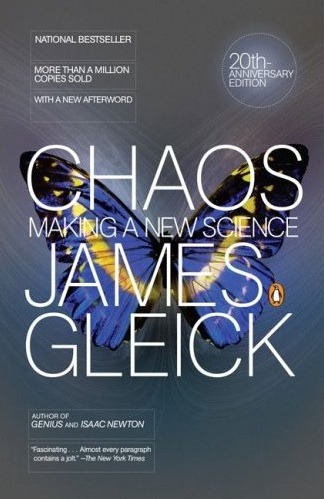
FOR A MORE RATIONAL APPROACH, read James Gleick's Chaos: Making a New Science. Among the most enlightening non-fiction books Krundt has read, Chaos describes how scientists are coming to terms with the unpredictable and disorderly aspects of nature that so fascinate artists: "the harmonious arrangement of order and disorder as it occurs in in natural objects, in clouds, trees, mountain ranges or snow crystals." From the turbulence of weather systems to what Thomas Hardy described as the braiding of water atop a moving stream, nature produces chaotic systems in which similarities and patterns can be discerned. The irregular branching of veins in a single maple leaf -- "an infinite line in a finite space" -- evokes the branching and sub-branching of the tree's limbs, great and small. What science has learned to describe, says Gleick, is the way such similarities and patterns persist across scales, from the micro level to the macro, much as M. Oscar -- or Lavant -- persists in each of his characters.
Anyone who would understand our world must notice this braiding of things, the unity of what Gleick's scientists observe and what Carax sees. Turbulence and uncertainty mark the meetings of the dissimilar, whether it's hot air meeting cold or M. Oscar becoming someone else. We, the actors in the audience, look for patterns, needing to discern some persisting identity that we can recognize.
-- --
See also:
The Milky Way
Susana
The Roots of Human Behavior
We Have a Pope
Complexity
Francesco Rosi: Cadaveri eccellenti & Christ Stopped at Eboli
Blow-Up
The Artist: Oscars French Homage Smackdown and Shaggy-Dog Cinema Salad
Daylight
The Tree of Life
Oscar Roundup 2013
Arbitrage
Wall Street: Money Never Sleeps
Too Big to Fail
Margin Call
Inside Job
Ayn Rand and Paul Ryan: Can This Be Love?
TV-B-Gone
#film#cosmopolis#holy motors#robert pattinson#don delillo#david cronenberg#leos carax#denis lavant#juliette binoche#Paul Giamatti#mathieu amalric#Manolha Dargis#krundt
1 note
·
View note
Text
The Impossible ****

Want a hit movie? Take my advice: Lose the tsunami. So far, the devastating 2004 tsunami has propelled two major films, each of them gigantically entertaining: first, Clint Eastwood's strangely moving "Hereafter", and now "The Impossible". Both delighted big audiences overseas but bombed in the U.S. "The Impossible" -- my nominee for worst-titled movie of the year -- stars Naomi Watts and Ewan McGregor in the odyssey of a tsunami-tossed family desperately seeking reunion. This powerfully emotional, ultimately inspiring suspense-thriller sold less than $20 million worth of tickets stateside, compared to $150 million abroad. Listen, kid. Earthquakes, asteroids, tornadoes, even volcanoes -- all fine. Tsunamis? Nix.
Too bad, because if you like movies and are capable of even the most rudimentary human feeling, "The Impossible" is one picture you need to see. (And while you're at it, consider "Hereafter", too.)
As a general rule, it doesn't pay to miss anything featuring Naomi Watts, who's been flattening us against our seats since "Mulholland Dr." and "21 Grams". In "The Impossible", she plays an internationalized version of Maria Belon, a real-life Spanish doctor caught in the tsunami with her husband and three young sons while vacationing in Thailand.
In the film, as in life, the woman is gravely wounded and stranded with her oldest boy. The rest of the family is out of sight, presumed dead. Walking barefoot across a hellscape of fallen palm trees and electric poles, broken reeds, dead bodies, and sharp-edged wreckage obscured by muddy water, she and her son face new dangers with each painful step. Weakened and soon sickened by her injuries, the mother must depend on her son, a kid in his early teens who grows up fast before our eyes. Meanwhile, in counterpoint, Ewan McGregor has found the younger two boys and launches a search of his own.
"The Impossible" develops into a kind of thriller I've never seen before, a primal survival story grounded in the love of a mother and her son. It delivers the aching suspense we expect from such man-against-nature thrillers as Into Thin Air or "Touching the Void", but with a woman's heart and soul.
Though perfectly adequate in his role, McGregor is thrown out to the wings by the primal power of Watts' Oscar-nominated performance. She tears into the agony of her character, howling with grief and pain like some lady out of Sophocles, hiding her beauty under ever more gangrenous makeup, while somehow offering us a portal into feelings that have immediate relevance in our own lives. How does she do it? Also praiseworthy is the brilliant young actor who plays the eldest son: Tom Holland, who made his bones as Billy Eliot on the West End stage.
Please note: this is a survival story. It's not a spoiler to observe that Belon and her family are all alive -- and, as the photo below demonstrates, deserving of great-looking actors to portray them.

"The Impossible" broke box-office records in Spain, where the passionate story of the Belon family is well known. Turns out the movie is a Spanish production, directed by Juan Antonio Bayona. Like his movie, Bayona deserves more attention in the U.S. Now that he's got the tsunami out of his system, he should do just fine in Hollywood.
-- --
See also:
Oscar Roundup 2013
Fair Game
Hereafter
Three Films in Spanish
127 Hours
Changeling
Bond James Bond
#film#The Impossible#Maria Belon#clint eastwood#ewan mcgregor#naomi watts#tsunami#hereafter#tom holland#juan antonio bayona#krundt
4 notes
·
View notes
Text
Starlet ***
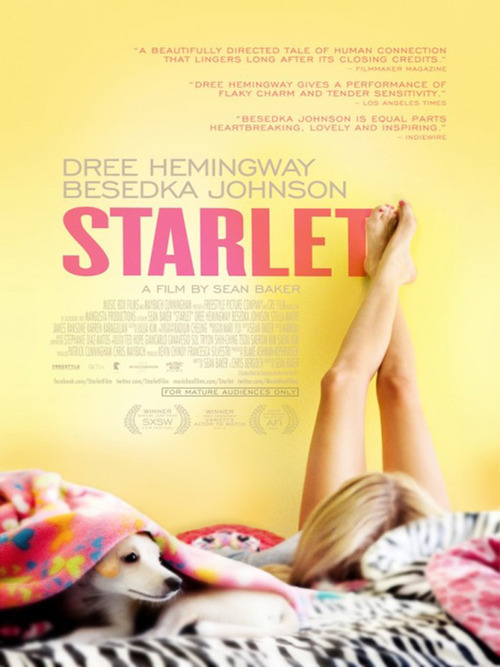
If you see "Starlet", see it for the late Besedka Johnson, 85 years old and innocent of acting experience when cast in the role of Sadie. Johnson, a former condominium manager who seems to have enjoyed her share of glamor and fun, portrays Sadie as a cranky old lady whose life has meant something to her. She reveals herself to us, bit by bit. In its way, this amateur performance is as complete and touching as those of Emmanuelle Riva and Jean-Louis Trintignant in "Amour" -- to my taste, among the best of the year.
As for the film: It's ambitious, genuinely interesting at times, but I can't really recommend it.
The story centers on the strange, shallow friendship that develops between Sadie and an aimless young woman played by Dree Hemingway. Naturally Hemingway, a blonde, slender, leggy former catwalk model, is the focus of the movie. Her body, flat-bellied and always on display, easily captures the camera's interest, but her face is forgettable. As a screen presence, the bland Hemingway can't compete with Johnson. Her character, Jane, is the one who makes you sad. You can't wait till Sadie is back on screen.
Along with her two roommates, Hemingway's Jane is a low-priced commodity in the San Fernando Valley's pornography trade. Ordinary and unguided, these superficially attractive young people are squeezed within a narrow universe, casually smoking and snorting drugs, playing video games, driving cars, moaning falsely for the cameras. It's all about being numb.
Unlike her roommates -- who are associates, not friends -- Jane seems vaguely aware that something else might exist. This half-understood insight, this timid yearning, is incarnated in her pet, an anxiously loyal male Chihuahua named Starlet. When Jane discovers Sophie, she begins to discover what she wants. You don't need to see the movie to guess what it is.
Worthy in its ambitions, and in certain respects extraordinarily well-conceived, "Starlet" carries a burden that ultimately causes its collapse: pornography. The setting of Jane's story is so bleak, so careless, so casually hurtful, you crave a resolution that this film does not deliver. There's one brief but cruelly graphic sequence of a porn film being shot. I wonder if writer-director Sean Baker is, like his Jane, benumbed. Does he fully appreciate the horror of what he has created, or does he just, like Brian De Palma, enjoy watching women?
(For scary analytics about the power of porn, see this TechCrunch post. If you prefer to belittle the pornographic impulse by laughing at it, watch the online chat sequences in Miranda July's "Me and You and Everyone We Know".)
-- --
See also:
Oscar Roundup 2013
X-Men Who Hate Women
Me and You and Everyone We Know
Tiny Furniture
We Have a Pope
Dean Spanley
Blow-Up
Z
2 notes
·
View notes
Text
The Great Gatsby **

Why would anyone voluntarily see "The Great Gatsby"? Why would a soulless, endless, excruciating remake of an F. Scott Fitzgerald novel cop $60 million in opening-weekend ticket sales? Was it the confetti? The Duesenberg? All that expensive-looking garbage in 3-D?
I got sucked in by A.O. Scott's generously open-minded review in the New York Times. That reminds me of something my freshman roommate used to say: Open your mind too wide and your brains will fall out.
Dreamy memories of Baz Luhrmann's first two films had continued to seduce me: His wonderful debut, "Strictly Ballroom" is an all-out, take-no-prisoners dance-contest spectacular that puts "Silver Linings Playbook" to shame. Luhrmann's "Romeo + Juliet", featuring Leonardo DiCaprio + Claire Danes, plus gangbangers with guns, is a frenetic, two-fisted updating of Shakespeare that works. (It's almost as amazing as the "Hamlet" with Ethan Hawke released in 2000; watch what happens with that sliding glass closet door.)
By contrast, Luhrmann's "Moulin Rouge!" and "Australia" had put me to sleep, each in its own special way. Over-stimulation can do that to you.
So by the time this super-charged "Gatsby" rolled up, spewing exhaust fumes and promotional tie-ins, Krundt had forgotten how profoundly bad Lurhmann could be. Anyone who has seen "Gatsby" now must be humbled and awed by the vast scale of what the multi-talented Lurhmann can do: Surely none of us can imagine how bad the work of this writer-director-producer-composer-actor could be, if only he put his mind to it.
What's wrong here? Despite the fine cast, not one of the characters comes alive. The movie is operatic in its staging, exuberantly artificial, yet empty of feeling or even zest. It's out of touch: Look at them jazzy Negroes playing horn on fire escapes. And by the way? Crap poster.
In fairness, the central concern of Luhrmann's "Gatsby" is not visual giltz but money, and entombed somewhere in this overlong and irritating film is a point of view about money that might even be interesting, if all the confetti weren't giving you hives. A movie so devoted to images of people drinking Champagne out of Big Gulp-sized goblets ought to deliver some effervescence, some intoxication. "The Great Gatsby" takes us straight to the hangover.

Even so, there is one reason to see "The Great Gatsby": It will help you appreciate Stephen Colbert's all-Gatsby-all-of-the-time plugorama show, featuring both Luhrmann and Carey Mulligan, who plays Daisy Buchanan in the film. See it for Mulligan, who's appealing in an earthier way than we've seen before, and adroit with peanut butter.
-- --
See also:
Not Fade Away
The Five Year Engagement
Silver Linings Playbook
The Artist
Thor
Bond James Bond
Oscar Roundup 2013
The Girl with the Dragon Tattoo
Tinker Tailor Soldier Spy
Margin Call
Ed Wood
#The Great Gatsby#Gatsby#Baz Luhrmann#Leonardo DiCaprio#Carey Mulligan#F. Scott Fitzgerald#film#book#A.O. Scott#romeo + juliet#strictly ballroom#Claire Danes#ethan hawke#moulin rouge#money#stephen colbert#Peanut Butter#krundt
1 note
·
View note
Text
Not Fade Away ****
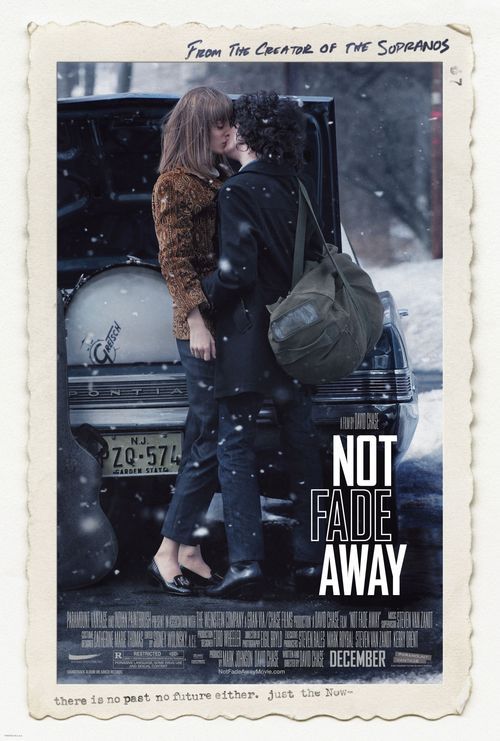
David Chase’s 1960s rock saga “Not Fade Away” takes us from Joey Dee & the Starliters' “Peppermint Twist” to the Sex Pistols’ cover of Jonathan Richman’s “Roadrunner”. It takes us from the living death of high school in Jersey, through rectangular blue sunglasses, Cuban heels, skinny chicks, and The Tibetan Book of the Dead, then on to rock ‘n’ roll dreams in L.A. Which is to say it’s a nostalgic coming-of-age story about a boy and a band, with a killer soundtrack on ABKCO Records, James Gandolfini sharing breakfast with Huddie Ledbetter, and always, everywhere, the spirit and shadow of the Rolling Stones.
"Not Fade Away" isn't trying to be the best movie ever made. It's a modest, deeply felt memoir about a certain set of yearnings, the ones that led us to leave home, make love, break stuff, and vent our most subterranean selves in loud music with a massive beat. For me, the movie felt real, like how it was. Which is plenty.
And what a great poster! Bella Heathcote's pose, her arm slack but her heels a little off the ground. The snow coming down, so you know her feet are cold. The kiss she's giving to John Magaro, cool now that he's lead singer and his hair has grown out. His legs look just as good in tight jeans as hers; we used to call that unisex. The drum in the Pontiac's open trunk and the guitar case on the left suggest what the movie's about. And in the background, ignored by the impassioned lovers, New Jersey.
Getting Steven Van Zandt to produce the "Not Fade Away" soundtrack didn't hurt. As an actor, he wore out his welcome on the disappointing Netflix series "Lilyhammer" -- but here, he's in his element. The music clearances are a triumph, including tunes by the Stones, Beatles, Kinks, and Dylan, not to mention Henry Mancini and Elmore James. In the studio, to amp up the sound of the onscreen band, Van Zandt assembles Max Weinberg and Garry Tallent -- drums and bass from the E Street Band -- and guitarist Bob Bandieram from Southside Johnny. And don't miss that jingle for Martin and Sugarhorn Surgical Supplies.
What's best about Chase is his appreciation of irrationality -- the ducks in Tony Soprano's pool, the feeling evoked by the newspaper at the end of that eternal driveway. You get lots of that here. My favorites are the shots of Magaro and Heathcote sprawled on a pair of lawn chairs, holding hands, playing footsie, smoking cigarettes, believing themselves already gone, independent of their own roots.
That's not all. Christopher McDonald, playing the girlfriend's square dad, wears the best plaid pants in film history. Isiah Whitlock Jr. digs ditches and proudly sends his son to Viet Nam. Chase pays fetishistic attention to once-familiar album covers -- John Mayall's Blues Breakers with Eric Clapton, etc. There's a lovely clip from Blow-Up, with that haunting sound of trees rustling in the wind. There's a woman in a car with a vine tattooed up her face. And with props to "The Twilight Zone", there's something up there in the sky.
As you'd expect from Chase, there's plenty of family life mixed in. Magaro's Douglas is the central character, starting out as the skinny loser who observed Heathcote making out with more successful guys at parties. (Turns out later she was doing more than that.) His family lives in the dismal frame house where the Pontiac is parked in the poster, the home of a lower middle class family struggling to get by. He can't wait to leave it behind.
Molly Price, as the mom, is overweight, can't do much with her hair, and seems to spend her life in a bathrobe, ironing in the kitchen. Gandolfini, as the dad, has missed out on his chance in life; most of what he shares with his son is resentment and rage. The true hero of the picture is Meg Guzulescu as the kid sister Evelyn; keep your eye on her. She ends up in a dress that will remind you happily of "The Tenth Victim."
Sample dialogue, from a back-yard birthday lunch at home:
How's the group? Rock 'n' roll keeps you young, right?
Not really, Aunt Josie. It's an art form. Does Dostoevsky keep you young?
You know how night gets darker, and autumn air gets colder, when it's raining? Well, one cold, rainy night in maybe 1972, I was driving in Boston and picked up a hitchhiker. The scraggly wet guy who got in, shivering pathetically, turned out to be Peter Wolf of J. Geils. At least, that's who he said he was.
-- --
See also:
Life by Keith Richards
Complexity
Blow-Up
My Week with Marilyn
Bedazzled
Barbarella
Bond James Bond
Beware of Mr. Baker
The Young Lions
Super 8
Dance Conspiracy
Playlist #21
Playlist #76 - Road Work
Playlist #63 - el Gordo
Gorging on TV
Me and You and Everyone We Know
Cedar Rapids
Wild Target
The Man Who Wasn't There
Zero Dark Thirty
Being Mick: You Would If You Could
The Doors of Perception
Carlos
Gina Lollobrigida & Sophia Loren
An Occurrence at Owl Creek Bridge
#Not Fade Away#David Chase#steven van zandt#Rolling Stones#1960s#film#Peppermint Twist#Joey Dee & the Starliters#Sex Pistols#Jonathan Richman#Roadrunner#james gandolfini#The Sopranos#ABKCO#Allen Klein#Huddie Ledbetter#Lead Belly#Beatles#the kinks#bob dylan#Henry Mancini#Elmore James#Max Weinberg#Garry Tallent#Bob Bandieram#E Street Band#Southside Johnny#Tony Soprano#Meg Guzulescu#Christopher McDonald
3 notes
·
View notes
Text
Dance Conspiracy *****

What a great idea: oppressed workers sneaking out to red-hot dance clubs at high noon. In a piece titled "It's Lunchtime: Let's Dance", the New York Times credits the craze to Molly Ränge, the Swedish founder of Lunch Beat.
Once you read the manifesto of this Scandinavian revolutionary organization, you'll need to join. In essence: You have to dance.
What Krundt likes best is Ränge's inspiration: "Fight Club". The whole thing is a secret conspiracy, see. You do not talk about Fight Club. Lucky for us she's got a Twitter feed.
-- --
See also:
Easy Money
Thor
Bond James Bond
Oscar Roundup 2013
The Girl With the Dragon Tattoo
Tiny Funiture
Moonrise Kingdom
Reprise
Genius Music Thing
The Adjustment Bureau
0 notes
Text
Easy Money ****
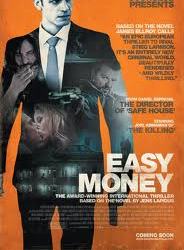
Shorn of the facial hair and hoodie of his Holder character in "The Killing", Joel Kinnaman is a tight-mouthed pretty boy in the Swedish thriller "Easy Money". He's a nobody from nowhere, at once anxious and bold. He's studying economics, driving a taxi for a guy named Abdulkarim, hanging out with his social betters -- looking for some way in to the good life. Naturally, he joins a gang of immigrants from the Middle East and Latin America as they prepare to smuggle in a load of cocaine from Germany. Oh, and did I mention the Serbian gangsters who have declared war on them?
The ironic title of Daniel Espinoza's tighly-constructed film refers not only to the challenging nature of the drug trade, but also to the harrowing difficulties of Scandinavian social climbing. Espinoza, a Swede known to American audiences for "Safe House" with Denzel Washington, is half-Chilean, so maybe he should know.
The drug war here is plenty exciting, but we've seen that before. What makes "Easy Money" worth watching is the overlay of class war. When the golden heiress played by Lisa Henni falls for Kinnaman's deceitful striver, the two gorgeous, ultra-blonde Swedes look like a perfect pair -- but we know they don't belong together. Meanwhile, the drug trade is populated by swarthy men with dirty hair -- the sort of visually obvious outsiders who've been wrecking things for homogeneous societies all over Europe for decades. Yet we see the blondies snort coke, and a monied banker bargain with the crooks: The elements of this uneasy society may be separate, but they are connected.
If "Easy Money" leaves you hungry, Krundt has some suggestions:
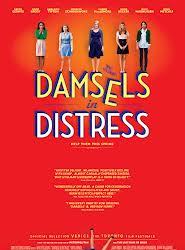
Whit Stillman's "Damsels in Distress" is an impossibly arch comedy of manners, depicting the efforts of three deeply deluded young women to set social standards at Seven Oaks college. This was my introduction to the subtle performer Greta Gerwig, whom I hadn't noticed in the hectic remake of "Arthur", and to the ambition of creating an international dance craze, in this case The Sambola! Stillman is an acquired taste, a self-aware throwback, obsessed with his private fantasy version of a homogeneous upper class in the United States. You get doofi; the dread triad of suicide, depression, and donuts; plus a character named Thor. Can't help it: Stillman makes me laugh!
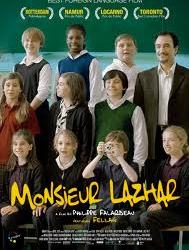
"Monsieur Lazar" is the deservedly praised story of an Algerian refugee who takes over an elementary-school classroom in Montreal. Deeply touching -- heartwarming and almost unbearably sad -- this story gives us a vivid, emotional experience of the mutual incomprehension of compatriots lacking a common culture and history.

"A Separation", which won the Oscar for best foreign-language film in 2012, gives us a peek at Iranian culture from the inside. A story of a marriage under stress, it suggests the intricate workings of a way of life that the white-bread Eurotrash snobs of "Easy Money" would not deign to notice.

"Incendies", a superb film about which Krundt wrote (here), takes an adult Canadian brother and sister back to embattled Lebanon, to discover the horrors of their mother's life in the old country.
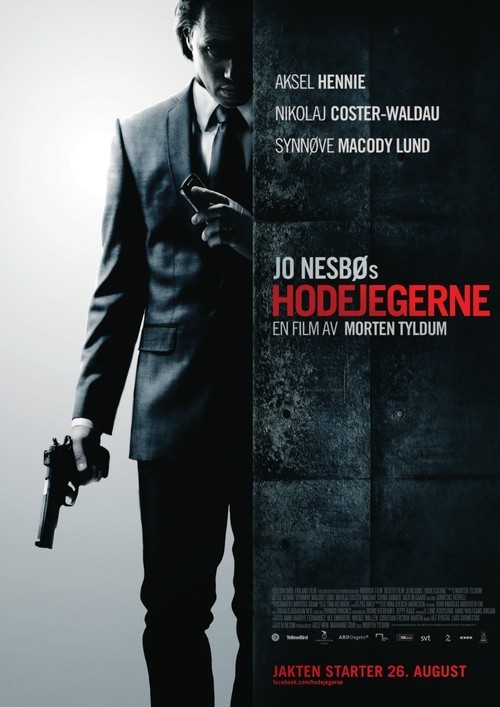
Finally, "Headhunters," a Norwegian thriller via Jo Nesbø, whose writings Krundt has had occasion to dismiss. It's thrilling enough, but you won't believe a minute of it. "Easy Money" is the one to see first.
-- --
See also:
Gorging on TV
Oscar Roundup 2012
The Girl with the Dragon Tattoo
Unstoppable
Incendies
A Somewhat Gentle Man
#film#krundt#easy money#joel kinnaman#holder#the killing#daniel espinosa#lisa henni#damsel in distress#monsieur lazhar#a separation#incendies#headhunters#Jo Nesbo
1 note
·
View note
Text
Oscar Roundup 2013

Krundt's third annual Oscar Roundup. The awards show was bad enough to make you collapse in tears, but movie-wise, a pretty good year.
In no particular order:
Moonrise Kingdom ****

Awarded: --
Nominated: Writing (Original Screenplay)
Click here for Krundt’s post on “Moonrise Kingdom”.
Life of Pi ***

Awarded: Directing, Cinematography, Music - Original Score, Visual Effects
Nominated: Best Picture, Directing, Film Editing, Cinematography, Music - Original Score, Music - Original Song, Production Design, Sound Editing, Sound Mixing, Visual Effects, Writing - Adapted Screenplay
It's easy to understand why "Life of Pi" got eleven Oscar nominations: pot is more or less legal in California. Think of those scenes in which the surface of the sea is a sea of stars -- among the most beautiful and trippy images in the history of cinema -- and then imagine wizened, wheelchair-bound Academy members toking up medical marijuana in their home screening rooms... You get the picture.
"Pi" makes no sense, and doesn't need to. Apparently the mind-numbing film derives from a book that's been a huge hit with the youth demographic -- a Hitchhiker's Guide to the Galaxy, Siddhartha or Trout Fishing in America for the 21st century. On screen, the microwave-ready ontology seems mighty dumb, but only if your cognitive apparatus is engaged. That's where the doctor-prescribed dope comes in.
If you are totally stoned, "Life of Pi" must be like a hot-lube massage for the mind. For the rest of us, gorgeous nonsense.
Skyfall ***

Awarded: Sound Editing, Music (Original Song)
Nominated: Cinematography, Music (Original Score), Music (Original Song), Sound Editing, Sound Mixing
Click here for Krundt’s post on “Skyfall”.
Django Unchained ****

Awarded: Actor (Supporting Role) - Christoph Waltz, Writing (Original Screenplay)
Nominated: Best Picture, Actor (Supporting Role), Cinematography, Sound Editing, Writing (Original Screenplay)
I’d love to hate Quentin Tarantino. His affinity for exploitation and extravagant eruptions of gore would keep me far away – except that Tarantino made one perfect movie, writes better dialogue than anyone, and even his worst films partake of a vital creative energy that reliably compels my refined sensibility to go fuck off.
“Django Unchained” is yet another Tarantino revenge story coloured by voluptuous spurtings of blood. What’s this guy so cranky about? Last time it was Hitler, now it’s slavery, but it’s always something. Maybe Tarantino wasn’t breast-fed as a babe? The director, who is unmarried, seems to believe that blowing up bad guys turns women on, as it did for Broomhilda von Schaft.
Mixed into this movie – weirdly, wonderfully – is Siegfried mythology from the “Nibelungenlied”, which props up the bizarre, inspired decision to cast the great Christof Waltz as a bounty hunter driving a dental cart. If this isn’t genius, I don’t know what is. Both Oscars are well deserved.
The Impossible ****
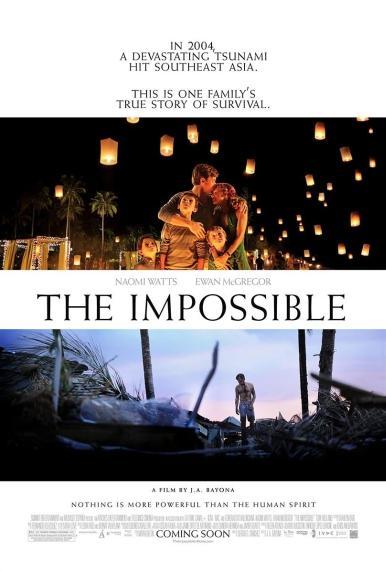
Awarded: --
Nominated: Actress (Leading Role) - Naomi Watts
Click here for Krundt's post on "The Impossible".
The Master ****

Awarded: --
Nominated: Actor (Leading Role) - Joaquin Phoenix, Actor (Supporting Role) - Philip Seymour Hoffman
A glorious flop, commercially and artistically, "The Master" is must-see eye candy for anyone who loves movies and a late-night harangue for guru devotees. The signature shot is seawater whipped white in the wake of a Navy ship -- an image of nature disturbed by human action.
Allegedly about Scientology, "The Master" is more concerned with delusion and subordination in male relationship, i.e., bromance. Joaquin Phoenix, fully recovered from "I'm Still Here", plays a violent, alcoholic WWII vet who finds a daddy in Philip Seymour Hoffman, an L. Ron Hubbard without the galactic bits. Amy Adams moves beyond adorable mode, as a woman who has her husband's power firmly in hand.
This movie doesn't work, but who cares? Director Paul Thomas Anderson seems to be a divine idiot out of Dostoevsky, immeasurably gifted and totally nuts. For my money, "There Will Be Blood" was the only Anderson movie that worked, but I know people who liked "Boogie Nights" and even (burp) "Magnolia". (I don't know what makes me want to die more, Tom Cruise or plagues of frogs.)
In this one, visual beauty and authentic acting more than compensate for a head-scratcher story.
Silver Linings Playbook ****

Awarded: Actress (Leading Role) - Jennifer Lawrence
Nominated: Best Picture, Actor (Leading Role), Actress (Leading Role), Actor (Supporting Role), Actress (Supporting Role), Directing, Film Editing, Writing (Adapted Screenplay)
Click here for Krundt’s post on “Silver Linings Playbook”.
Amour ****

Awarded: Foreign Language Film
Nominated: Best Picture, Actress (Leading Role), Directing, Foreign Language Film, Writing (Original Screenplay)
Don’t see “Amour” if you’re suffering from the slow decline of someone you love, or if you’re too young, or too scared, to appreciate the fragility of life. Cinéastes willing to suffer for love may adore Michael Haneke’s elegant, revelatory study of a married couple approaching the end of life.
Those of us who grew up with the nouvelle vague will be touched by the sight of Jean-Louis Trintignant and Emmanuelle Riva in their eighties, much as we loved seeing Michel Piccoli in “We Have a Pope” or Peter O’Toole in “Dean Spanley”. (Here, again, is the link to a 1959 filmed interview with the glorious Riva.)
Argo ****

Awarded: Best Picture, Film Editing, Writing (Adapted Screenplay)
Nominated: Best Picture, Actor (Supporting Role), Film Editing, Music (Original Score), Sound Editing, Sound Mixing, Writing (Adapted Screenplay)
Click here for Krundt’s post on “Argo”.
Marvel's The Avengers ***
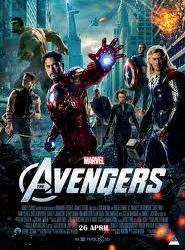
Awarded: --
Nominated: Visual Effects
If you like this sort of thing, "The Avengers" is not bad. The best bit comes after the closing credits, when the gang gathers for shawarma.
Marvel obsessives and other comix geeks might want to read Leaping Tall Buildings.
Zero Dark Thirty ****
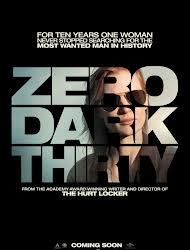
Awarded: Sound Editing
Nominated: Best Picture, Actress (Leading Role), Film Editing, Sound Editing, Writing (Original Screenplay)
You can hate the politics of “Zero Dark Thirty” and love the film. Kathryn Bigelow scores again. So does Jessica Chastain, who shakes off her delicate “Tree of Life” image with such lines as, Do your fucking job – bring me people to kill! The cast is adorned with such little-known greats as Édgar Ramírez of “Carlos” and Mark Strong of “Tinker Tailor Soldier Spy".
The action is totally credible (even when it may be factually wrong) and it’s exciting as hell. Bigelow chooses to spend little time with the SEAL team before the attack on the Osama bin Laden compound. She paces the attack itself with slow deliberation. The result of such unusual choices is high suspense despite the familiarity of the events onscreen.
Beasts of the Southern Wild ***

Awarded: --
Nominated: Best Picture, Actress (Leading Role), Directing, Writing (Adapted Screenplay)
“Beasts of the Southern Wild” wins the Oscar for Best Marketing. People went to this movie expecting to love it. Many of them, including Krundt, were disappointed. The production design is brilliant, the casting and acting are exciting and fresh, and the feeling of unfettered imagination is almost powerful enough to carry the picture. The problem here is the story, which is sour and ugly. And we could have done without the pigs in makeup.
Lincoln *****
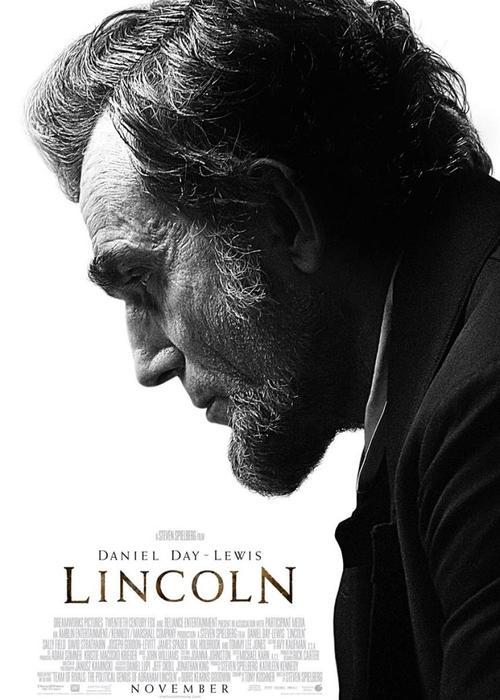
Awarded: Production Design, Actor (Leading Role) - Daniel Day-Lewis
Nominated: Best Picture, Actor (Leading Role), Actor (Supporting Role), Actress (Supporting Role), Cinematography, Costume Design, Directing, Film Editing, Music (Original Score), Production Design, Sound Mixing, Writing (Adapted Screenplay)
Click here for Krundt’s post on “Lincoln”.
Anna Karenina **

Awarded: Costume Design
Nominated: Cinematography, Costume Design, Music -Original Score, Production Design
"Anna Karenina" is cheekbone porn with Keira Knightly. Director Joe Wright, whose "Hanna" is a Krundt fave, trashes Tolstoy and creates an onscreen energy void, but brilliantly, beautifully.
The beauty belongs to to Knightly, who gets the full Garbo treatment as Wright's camera more or less licks her perfect features. We see so much of her that we start to notice Knightly's few physical imperfections: the horsey teeth, the scrawny chest. We loved her better in "Bend It Like Beckham".
By the way, Joe? The story doesn't work if Vronsky is a girl.
Snow White and the Huntsmen

Awarded: --
Nominated: Costume Design, Visual Effects
Crap.
Flight ****

Awarded: --
Nominated: Actor (Leading Role), Writing (Original Screenplay)
The best film Robert Zemeckis has ever made -- faint praise -- “Flight” opens with an overpowering visualization of an airplane crash. If you doubted that Zemeckis, who has dedicated his career to ever-more-fruity films, could speak to you, get over it: He can. What he needs is a story about credible human beings in more or less realistic situations, to which he can apply his phenomenal technical skills as a filmmaker. "Flight" may be the film that he -- and we -- have been waiting for,
Denzel Washington plays an ace commercial pilot who happens to be addicted to booze, drugs, and sex. You should be so lucky. Here, while fried on chemicals, he pilots a plane through a severe mechanical failure, brilliantly landing the craft with minimal loss of life. Turns out the secret is flying upside down. But the crash exposes him to investigation by the National Transportation Safety Bureau, as personified by Melissa Leo, which forces him to confront his demons before the closing credits.
For Denzel, this is just another hotshit performance. But for Zemeckis, it's a breakthrough.
As for the booze, load "The Lost Weekend" into your device of choice, take a seat at your local bar while the sun is still high, and watch it. Worthwhile experience, I promise.
The Pirates! Band of Misfits ***
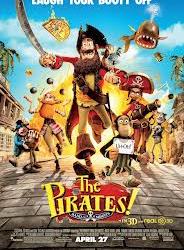
Awarded: --
Nominated: Animated Feature Film
A fine amusement for children, "The Pirates! Band of Misfits" is a cheerful, well-made animated film that offers no special pleasures to adults.
Prometheus ***

Awarded: --
Nominated: Visual Effects
You can skip Ridley Scott’s “Prometheus”, a ponderously ambitious episode in the “Alien” mythos. Instead, see Scott’s under-appreciated 2007 “American Gangster”, followed by “Thelma and Louise” (1991), “The Duellists” (1977), “Blade Runner” (1982), “Black Hawk Down” (2001), and “Gladiator” (2000). Few directors have made so many great movies, and almost none have Scott’s range.
“Prometheus” does have its virtues. Its subtle use of 3-D may be the most effective of any film to date, giving us a visceral experience of tunnels and other enclosed places instead of poking us in the eye with Angelina Jolie's bosom. The production design, with its colossal statuary, is extraordinary. Michael Fassbender is fun to watch as HAL’s love child. But I wish Noomi Rapace, so brilliant in the “Dragon Tattoo” movies, had stayed in Sweden. And once was enough for Scott’s gross-out aliens.
A Royal Affair ****
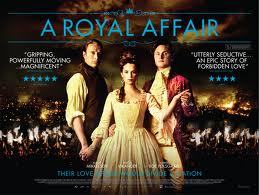
Awarded: --
Nominated: Foreign Language Film
Who doesn't like 18th century costume drama? "A Royal Affair" gives us a genuinely interesting moment in Danish history -- who knew? -- as the court of mad King Christian VII cedes power, and the love of scrumptious Queen Caroline Matilde (Alicia Vikander), to a man of the Enlightenment, played by Mads Mikkelsen, who's got more cheekbones than 20 Kiera Knightleys and played the villain Le Chiffre in the latest "Casino Royale".
Searching for Sugar Man *****
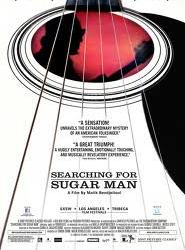
Awarded: Documentary Feature
Nominated: Documentary Feature
“Searching for Sugar Man” is a quest story with a payoff. During the early 1970s, a Detroit musician named Rodríguez became a superstar in South Africa without attracting much attention anywhere else. Then he vanished. Rumor had it he’d killed himself onstage. Decades later, with documentary cameras rolling, two South African fans hunt for the truth about Rodríguez. It’s no spoiler to say they found him – and revived his career.
This much is sweet. There’s nothing like good luck to improve a documentary film. But the producer’s good fortune is not limited to finding Rodríguez: It’s the nature of the man himself that makes this movie great. Rodríguez turns out to be some kind of self-taught Hispanic sadhu, who persists in working as a lowly manual laborer even after he is rediscovered. There’s something eerie, in a good way, about the virtuous vibe of this quietly charismatic man.
Speaking of Oscar-nominated documentaries, make sure you see “Senna”, the superb story of the Brazilian Formula One racing driver Aryton Senna, who won the world championship three times and died in a fiery crash. Because he was hugely popular and performing on a public stage, his short life was richly documented on film. As Director Asif Kapadia recognized, it also had the qualities of great drama: high ambition, severe challenges, powerful enemies, beautiful lovers, and more. The movie that Kapadia assembled from these elements is socko filmmaking, one of the most satisfying documentaries you’ll ever see. Incomprehensibly, "Senna" wasn’t nominated for an Oscar.
Les Miserables ***
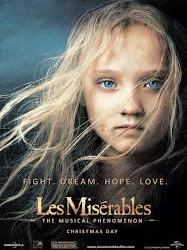
Awarded: Actress (Supporting Role) - Anne Hathaway, Makeup and Hair, Sound Mixing
Nominated: Best Picture, Actor - Hugh Jackman, Actress (Supporting Role) - Anne Hathaway, Production Design, Costume Design, Makeup and Hair, Sound Mixing
This one is really good, if you watch with the sound off.
-- --
See also:
Oscar Roundup 2012
Oscar Roundup 2011
Argo
Lincoln
Silver Linings Playbook
Moonrise Kingdom
Bond James Bond
Tinker Tailor Soldier Spy
X-Men Who Hate Women
21 Movies Worth Watching
Seven Films You Can Skip
Winter's Bone
The Girl with the Dragon Tattoo
More Much Missed Must See Movies
Three Films in Spanish
The Artist
Blow-Up
Susana
Carlos
Unstoppable
We Have a Pope
Dean Spanley
Vengeance
#oscar#Oscars#Academy Award#Amour#Argo#Beasts of the Southern Wild#film#Krundt#Django Unchained#Quentin Tarantino#Flight#Robert Zemeckis#Lincoln#steven spielberg#moonrise kingdom#Wes Anderson#Pirates#Prometheus#Alien#Searching for Sugar Man#Skyfall#James Bond#Snow White and the Huntsman#Zero Dark Thirty#Kathryn Bigelow#Jessica Chastain#Silver Linings Playbook#Michael Haneke#jean-louis trintignant#Emmanuelle Riva
3 notes
·
View notes
Text
Silver Linings Playbook ****
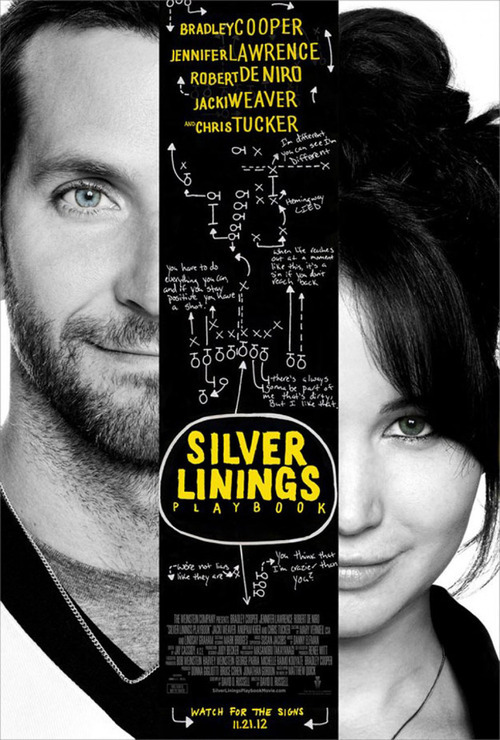
An extremely entertaining romantic comedy – despite a terrible premise, one of the worst posters in film history (above), and a phony Hollywood ending that might make us happy but violates the integrity of an otherwise excellent script. Go ahead, see David O. Russell’s “Silver Linings Playbook”, and enjoy it. Just don’t let anyone tell you this picture’s not about mental illness. It’s plenty funny and touching – so long as you’re prepared to spend 122 minutes with crazy people.
Sorry to sound insensitive, but these ailments are not politically correct. In real life, they’re not particularly entertaining, either.
With eight major Oscar nominations and $100 million of global ticket sales, “Silver Linings” has successfully battled audience aversion to its subject matter. Writer/director David O. Russell deserves most of the credit. Krundt has seen five of his six released features (no way we’re watching anything called “Spanking the Monkey”). They range from the timeless hilarity of “Flirting with Disaster” to the soulful social realism of “The Fighter”. Russell’s movies are not all great: Despite a deeply funny script and strong performances by Ice Cube, George Clooney, and Mark Wahlberg, “Three Kings” didn’t quite work: Only a crazy person would make a comedy this dark, mixing laugh lines with the worst brutalities of war, including torture and the killing of innocent women. Much worse was the Jason Schwartzman vehicle “I Heart Huckabees”, which felt like a dental treatment from Christian Szell.
A review of the Russell oeuvre reveals three things: His genius is for intensely specific portrayals of people, places, and communities in the tradition of Zola and Balzac. Russell’s films are remarkably inconsistent, but on average, his comedy works better than his drama. And mental illness is a thread that runs throughout his work – an obsession, if you will. The ultimate Russell film may be “Flirting with Disaster,” which combines close observation, comedy, and nuttiness.
The painful story elements of “Silver Linings” – vivid portrayals of the confusion and suffering of madness – are counterbalanced by gag-filled comic set pieces. The movie’s manic swings from one mode to the other suppress an underlying sadness that otherwise might be unbearable.
The story begins when Pat, a bipolar former teacher with a ruined life, is released from court-ordered lockup at a mental-health facility and returns to his parents’ home. Bradley Cooper, so convincing in “Limitless” as a loser who gains superhuman smarts by taking hits of MDT-48, embodies Pat with equal conviction. If the talented Cooper had more sex appeal, he might be a peer of Brad Pitt. (Watch Cooper’s eyes during the scene at the school, as his Pat unwittingly terrifies a former colleague.) Once you meet Pat’s parents, you realize the dude’s a chip off the old block: Jackie Weaver deserves an Oscar as his worried mom; Robert De Niro is swell as the OCD dad but doesn’t need another statuette for this.
Jennifer Lawrence is the love interest, a troubled young widow named Tiffany. Playing crazy can be good career strategy for an ambitious female actor – but the gambit requires effort. By her own testimony, Lawrence is lazy. Maybe that’s the trouble. Krundt adored her in "Winter's Bone", but more often has found her dull: in “X-Men: First Class”, “The Hunger Games”, and here. We may be hopping off the Jennifer Lawrence bus.
Harder-working actors provide many of the great delights of “Silver Linings”. A gifted cast enlivens the characters and social settings with extraordinary specificity. The vividly portrayed minor characters include a shrink who’s crazy for football, played by Anupam Kher, and Chris Tucker’s serial escapee. John Ortiz, so great in “Luck”, brings intensity to the role of an unhappy young husband, while Paul Herman, whom you’ll remember from “The Sopranos”, lends street cred to an important subplot about betting.
In the end, though, there’s something weird about the way “Silver Linings Playbook” strives to delight mass audiences with madness. You can see how the increasing tolerance of American society – what might be called our Oprahization – creates an opening for this sort of nonsense. “Next to Normal”, a rock musical about bipolar disorder, drug abuse, and suicide, did 733 performances on Broadway, winning three Tonys and a Pulitzer. I saw the show at a suburban dinner theatre – and what’s worse, kind of enjoyed it. We confuse an attitude of tolerance-from-afar with compassion. And we do almost nothing to help.
Rather than evade the real matter of madness, look to the work of Arnaud Desplechin, who combines full-frontal insanity with heartwarming entertainment in ensemble shows such as “Une Conte de Noël” (“A Christmas Tale”) and “Rois et Reine” (“Kings and Queen”). Essential to both is Mathieu Amalric, a member of Desplechin’s brilliant troupe who’s expert at playing crazy. (You may remember him from “The Diving Bell and the Butterfly”, in which he was a sexy magazine editor paralyzed by a stroke; “Quantum of Solace” – a James Bond film in which he played a villainous environmentalist; not to mention “Mesrine” and “Cosmopolis”.)
“Une Conte de Noël” gives us a family’s Christmas reunion the year that mom – Catherine Deneuve – is diagnosed with fatal leukemia. To survive, she needs a donor of bone marrow, someone who shares her specific genetic (and spiritual) identity. Of all the family members, only the two crazies – Amalric’s tortured violinist and his suicidal nephew – fit the profile. This small drama plays out amid a family gathering of symphonic order and complexity, as sexy girlfriends (Emmanuelle Devos) vie for our attention with adorable septuagenarians (Jean-Paul Roussillon). Multiple plots, threaded together, leave us feeling that we’ve experienced real life. As satisfying movie as you’re likely to see this or any year.
Another avenue to madness is though Jean Cocteau, best known to moviegoers for “La Belle et la Bête” (“Beauty and the Beast”). His “Les Enfants Terribles” (“The Holy Terrors”), directed by Jean-Pierre Melville, gives us a teenage brother and sister, fantasists poised to lose themselves in insanity. It’s a peculiar pleasure to watch them go nuts.
As we spiral down into the primordial goo, we lose our fine discrimination. Next thing you know, we’re watching Jacques Tourneur’s 1942 “Cat People”. This marvelous exposition of repressed teen sexuality tells the story of an all-American doofus married to a Serbian hottie who avoid sex lest she turn into a man-eating panther. One thing leads to another and eventually some blood is spilled.
(Can't resist: Simone Simon, who plays our feline Serbian, was a real-life Bond Girl. Among her many lovers was Dusko Popov, a model for Ian Fleming's James Bond.)
-- --
See also:
Oscar Roundup 2013
The Fighter
Diary of a Madman
Limitless
The Five Year Engagement
Winter's Bone
X-Men Who Hate Women
Bond James Bond
Mesrine
Blow-Up
21 Movies Worth Watching
The Descendants
The Other Guys
#silver linings playbook#Bradley Cooper#jennifer lawrence#Robert De Niro#Jackie Weaver#Chris Tucker#David O. Russell#film#Krundt
1 note
·
View note
Text
Do We Have a Pope?
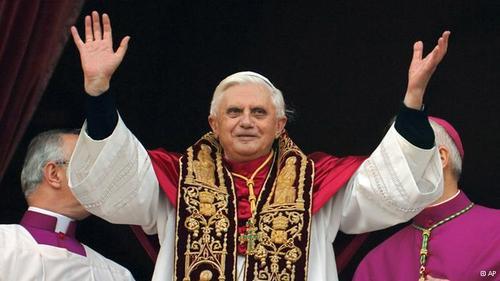
The surprise resignation of Pope Benedict XVI, upending 600 years of Catholic tradition, creates the opportunity for some shameless self-promotion. Click here to read Krundt's post on "We Have a Pope", a delightful movie that everybody should be watching now.
-- --
See also:
R.I.P. Sexy Beast
Christ Stopped at Eboli
Of Gods and Men
The Milky Way
Daylight
Blow-Up
Editorial Policies
0 notes
Text
Farewell, My Queen ****
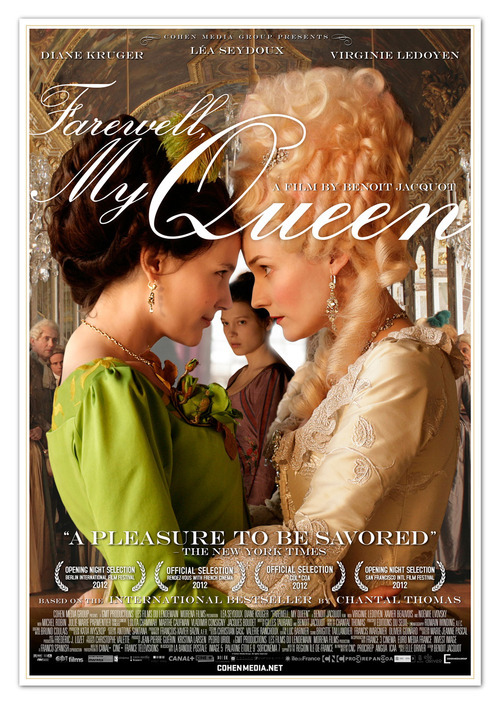
“Farewell, My Queen” is a subtle pleasure. Overtly, it’s yet another gorgeous costume drama about the last days of the French monarchy, set in Versailles right after the storming of the Bastille, seemingly focused on doomed Queen Marie Antoinette and the women around her. But “Farewell” follows a peculiar and more interesting course.
From the first, we observe events through the eyes of a servant, Agathe-Sidonie Laborde, reader to the queen, a handsome, self-possessed maiden of undefined social status, insecure in her position at court and anxious to please. As the movie proceeds, our expectations of a straightforward narrative are confounded. Unanswered questions accumulate. Eventually, the movie reveals itself as a character study. Its ultimate focus is Sidonie herself, a young woman making her own way in life, whose choices are not always easy to understand, whose inner mystery is amplified by our attention. The film’s poster, above, elegantly captures the situation: Sidonie, in the background, is clearly subordinate to the queen and her aristocratic lover – and yet the servant is at the center.
This is a women’s movie made by a man, director Benoît Jaquoit. He gives us the rare pleasure of a film spent almost entirely in the company of women: the sublime Marie Antonette, played by Diane Kruger; the queen’s irresistible and all too savvy lover, the duchess Gabrielle de Polignac (Virginie Ledoyen); Madame Compan, the queen’s formidable lady in waiting (Noémie Lvosky); Sidonie (Léa Seydoux) herself; and various other aristocrats, attendants, and servants. We meet a few men, notably a sympathetic King Louis XVI and a wise archivist played by Michel Robin, but they remain at the periphery. The male perspective is delivered mainly through the director’s eye, which adores the sight of women, particularly undressed.
For all they have in common, the women respond in strikingly individual ways to the threat of revolution and the communards' threat to behead, among many others, both Marie Antoinette and Gabrielle. Life at court, a delicate clockwork operating in conformity to fine adjustments of social status, suddenly becomes a experiment in adaptation. As their society loses coherence, these women must make unaccustomed choices. Of all their choices, Sidonie’s seem most fateful.
The movie’s central image is an ornate golden clock, loaned to Sidonie by her mistress and gloriously out of place in her humble chamber. In the best of times, the cherished instrument fails to regulate Sidonie, who oversleeps; in the worst of times the clock becomes, in its way, another victim of the mob.
A note on casting: I first saw Diane Kruger, so elegant and refined as Marie Antoinette, as the Bosnian taxi driver in “Unknown”. Quentin Tarantino’s “Inglourious Basterds” featured both Kruger, who played Bridget von Hammersmark, and Seydoux, in a minor role. Seydoux, seen in "Mission Impossible - Ghost Protocol" and “Midnight in Paris”, is descended from two French studio chiefs, the heads of Gaumont and Pathé. I’ve encountered Virginie Ledoyen in Francis Veber comedies, Claude Chabrol’s “la Cérémonie”, and the memorably awful DiCaprio flick, “The Beach.”
If you're in the mood for an orgy of Marie Antoinette films, follow "Farewell, My Queen" with "Marie Antoinette", and then "The Queen of Versailles".
"Marie Antoinette" (2006) is Sofia Coppola's wacked-out mash-up of period costume drama with contemporary chick flicks. Turn off the sound and it looks like the traditional story -- plenty of wigs and 18th century dress amid the gilt and mirrors of Versailles -- though you might notice the extraordinary brilliance of the lighting, the way the jewel tones pop, in contrast to the realistically sombre blue-greys of "Farewell, My Queen". (Coppola's hot-pink opening titles reminded me happily of "An Affair to Remember".)
Turn the sound back on, and you get what Coppola is doing: It's the collapse of the French monarchy as understood by an ignorant, easily bored American teen. The soundtrack is aggressively 21st century, featuring Gang of Four's "Natural's Not in It". Kirsten Dunst, among the most forgettable of movie stars, plays the Austrian-born queen as a clueless American high schooler. Jason Schwartzman, whose specialty of cloying self-consciousness has become a reliable marker of bad films, plays Louis XVI as an insecure pup. A bejeweled cast includes Marianne Faithfull and Steve Coogan.
The idea here may have been to hook young movie-goers on a classic story before they can roll their eyes. Whatever. Meanwhile, Coppola's bold anachronisms crack open insights about life in the 18th century and in the 21st. Astonishingly, this movie works. (Not for U.S. audiences, though: It grossed $60 million, three quarters of it overseas.)
For dessert, move on to "The Queen of Versailles", a strangely moving 2012 documentary about a nouveau riche couple inspired to build their own version of France's royal palace in -- where else? -- Orlando, Florida. The happy couple are Jackie and David Siegel. Jackie, who melds bad taste with goodness of heart, is a blonde, seemingly artificially-enhanced mother of eight, the visual twin of Jennifer Coolidge's Sheri Ann Cabot character in "Best in Show". Thrice-married David, speaking to the camera from a hilariously ornate gilded chair, is CEO of Westgate Resorts, a leading developer of time-share resorts.
As the movie opens, the Siegels are unimaginably rich and spending as fast as they can. Already living in an gigantic home overstuffed with expensive junk and fouled by dog poop, they are building a mansion inspired by Versailles: It is expected to be the largest private home in the U.S. Director Lauren Greenfield gives us the cruel fun of observing the Siegels' unaffected vulgarity. At the same time, she somehow wins our sympathy and affection for Jackie, while portraying David as unpretentious and sincere.
Then the Siegels' wealth evaporates. With the collapse of Lehman Brothers in 2008 and the global financial catastrophe that ensued, banks stopped handing out easy money to dubious borrowers. The movie suggests that Westgate Resorts, like so many real estate developers, was deeply in debt. To keep up its payments and stay in business, Siegel's company needed the cash flow provided by selling modestly-priced time shares to buyers of modest means. When the banks curtailed lending, sales of time shares plunged. Siegel had personally guaranteed some of Westgate's massive debt. He faced ruin.
For the moviemakers, this was a lucky break on the scale of the killing of Osama bin Laden during the pre-production of "Zero Dark Thirty". Unexpectedly, Greenfield's odd little documentary becomes important: A cinematic companion to Michael Lewis' The Big Short, "The Queen of Versailles" gives a human face to the economic downturn, helping us understand how the mighty were humbled. And since Jackie and David continued to cooperate with the filming, we get the perverse pleasure of watching their slow-motion downfall.
Westgate Resorts sued the filmmakers for defamation. In their position, you'd have done the same. More remarkable is that this film convincingly portrays the Siegels, in adversity, as almost noble.
-- --
See also:
Moonrise Kingdom
The Artist
Mission Impossible - Ghost Protocol
Seven Films You Can Skip
The Earrings of Madame de...
Dinner for Schmucks
Inspector Bellamy
Mademoiselle Chambon
Hanna
Ondine
The Last Station
I Am Love
21 Movies Worth Watching
Life by Keith Richards
The Trip
Too Big to Fail
#Farewell My Queen#Diane Kruger#Lea Seydoux#Virginie Ledoyen#Benoit Jacquot#film#Krundt#French revolution#Versailles#Bastille#guillotine#Marie Antoinette#Sofia Coppola#Jason Schwartzman#Steve Coogan#Gang of Four#The Queen of Versailles#Queen of Versailles
1 note
·
View note
Text
Bond James Bond ***

Thing to remember about James Bond, as we celebrate his 50th anniversary in film with “Skyfall’s” $1 billion gross, is that nearly everything he stands for is wrong. Sure, he’s skilled, gives his all, and always gets the job done. We’d like to believe he’s on the right team. But the guy’s a predator licensed to kill. As Daniel Craig takes pains to remind us, Bond’s a bad bad boy, with limited imagination and a mangled soul.
After a lifetime handcuffed to this character, I feel like Javier Bardem when he complains, toward the end of “Skyfall”, This is exhausting! (Ian Fleming’s first Bond novel, Casino Royale, was published in 1953, making this actually the 59th anniversary of James Bond.)
So when the special logo celebrating a half-century of Bond came up at the end of the “Skyfall” credits, I didn’t applaud. A logo? Are you kidding? Is it just me, or is this reminder of commercial longevity somehow off-putting, like a sex worker celebrating 50 years of service at an S&M club?
On second thought, maybe that’s the point.
Enduring through the last 50 or 59 years, James Bond may not be the cause of profound change on a global scale, but he surely is among its leading avatars. Like the Dude, he abides, and longevity makes him relevant. Like the Rolling Stones, now celebrating their own 50th anniversary, Bond demonstrated how to live wrong and then patiently waited for us to catch up, What he represents now, besides wrongdoing rewarded, is brand marketing – unless that's redundant? Fleming’s ruthless, sexist spy deserves a logo because what he really stands for is selling.
Over the course of decades, as Bond was morphing from literary character to branded global franchise, marketers were discovering the power of brands, logos, endorsements, line extensions, and advertising-everywhere. In 1953, normal folks could live entire lives without ever displaying a logo on their persons, and few citizens thought of themselves as “consumers”. Today, most members of the global population who aren't actually starving participate willingly, often enthusiastically, in a global brand-marketing culture designed to pluck money from their pockets and move it into the bank accounts of companies pursuing their own economic self-interest.
Nothing necessarily wrong with that, but my observation is that in these transactions, the balance of power generally favors companies over people – which is no problem, of course, because now corporations are people. A really effective consumer business functions like a whale eating krill, devouring them in uncountably massive numbers and digesting them later. In this scenario, you and I are the krill, which is not the glamor role.
“Skyfall,” a grande bouffe of strenuous entertainment, wore out both its arch-villain and this viewer long before the end of its 143-minute runtime. It's not a bad movie, and with severe editing might have been quite a good one. For the cost of your ticket you get plenty of thrills, plus a changing of the guard and a half-serious attempt to refresh the Bond myth. Craig deepens his portrayal of 007 as an unfeeling instrument of state policy, a dour killer with a certain savoir vivre but a confined emotional range. Ben Wishaw updates Q for the digital era, impotently but usefully reminding us that technology is the problem, not the solution. Otherwise estimable, Judy Dench proves conclusively that her M was misconceived: Her character is supposed to be a vice admiral, not a headmaster. A new Miss Moneypenny arrives, awkwardly.
Bardem, ever-masterful, delivers a fluffed-blonde version of the insane, unlicensed killer he’d created in “No Country for Old Men” – scary and capable, witty in the way he carries himself, but perhaps less ambitious than your average world-destroying Bond-film baddie. The repressed sicko eroticism inherited from Fleming – remember the laser beam heading toward Sean Connery’s crotch in “Goldfinger”? – gets transmuted here into homoerotic banter, with that Old Etonian 007 dryly acknowledging a broader range of sexual experience than he had shared with us previously. And director Sam Mendes introduces an unaccustomed high-art sensibility to the series while delivering one spectacular action sequence after another. But he and his colleagues try too hard.
The too-muchness of this $200 million movie – the motorbike chase across the rooftops of Istanbul, the fight atop a fast-moving train, the tiresome London sequence culminating in the spectacular crash of an Underground train, and the final battle-to-the-death at Bond’s boyhood home – is like an overlong night of sex with an insatiable lover too self-involved to notice that you fell asleep twenty minutes ago.
In commercial terms – the only terms that matter here – “Skyfall” is an extraordinary success. Its worldwide ticket sales amount to a quarter of the $4 billion total receipts for the entire 50-year film series. Given that the series ran out of Fleming stories in 1979 with “Moonraker”, and has been forced to invent even new titles since 1995’s “Goldeneye” – not to mention that Craig is the 11th actor to portray James Bond – "Skyfall's" lusty commercial performance is a testament to the power of brand marketing. There’s little left of the original James Bond except martinis and the compulsion for profit.
(Speaking of exploitation, book publishers have been straining to keep up. Astonishingly, more James Bond books have been written since Fleming’s death, by various hacks from Kingsely Amis to John E. Gardner to Lee Child, than the former seigneur of Goldeneye ever wrote himself. If I don’t need to read them, you probably don't. There's even a "Young Bond" series, which inflames the unhealed trauma of discovering that Franklin W. Dixon, the author of the Hardy Boys books, never existed.)
“Skyfall’s” commercial achievement survives adjustment for inflation, which mattered a lot in the olden days. For example, “Dr. No” grossed just $16 million in 1963; but in today’s money, that take equals $150 million, according to BoxOfficeMojo.com. Once the numbers are tweaked for inflation, total receipts for the series bump up 25%, to $5 billion. Fifty years of that kind of moolah is something to celebrate for sure. And “Skyfall’s” $285 million take in just the U.S. market – third-highest of the series, after “Thunderball” and “Goldfinger”, even when inflation is taken into account – is astonishing for the 23rd official Bond film. (It's the 26th, if you count two early “Casino Royales", plus the 1983 “Never Say Never Again” with Sean Connery). Never say that this whale is not in fine feeding form.
My father, a clandestine agent during WWII, gave me the newly published On Her Majesty’s Secret Service in 1963. A real-life version of the misguided youths in Kurt Andersen’s well-told 1960s story, True Believers, I became obsessed with Fleming’s books, reading the entire series three times, even For Your Eyes Only and The Spy Who Loved Me.
In Andersen’s novel, the adolescents' espionage hobby takes a devastatingly practical turn. My own attempts to apply what I learned from Fleming were more pedestrian. At 14, for instance, I went to school one day with a Mattel snub-nose .38 toy revolver in a plastic shoulder holster hidden under my jacket – in a spirit not of mayhem but of practice at being sneaky. For an aspiring spy, you understand, such concealment is an essential skill to develop. I knew that if my 9th grade classmates caught me with a babyish toy gun, they would tease me mercilessly forever after. So in a dopey, 14-year-old way, this prank was a test of courage as well. My secret mission was to carry that self-incriminating object through the entire school day, including semi-public changes of clothes before and after sports, without getting caught. Well, mission accomplished: I got away with it. Today, in the context of school slaughter, this exercise must sound creepy or evil – as it should – but in a naïve 1960s context, it felt merely geeky and delusional.
Of course, the delusion was not mine alone. When I was growing up, spies were cool. Guns were cool. Cigarettes and booze were cool, especially when combined. Driving way too fast was cool. Seducing troubled, weak, or unwilling women was cool. And let’s be candid: In the right context killing people was extremely cool, just as it is today. From the very beginning, the iconic introduction Bond, James Bond has been a mantra of bad values enthusiastically shared.
Over time, our taste in bad values may have evolved – no more gold-ringed Morlands, thanks – but what’s really changed is the role of commerce in our lives.
There may be no better way to appreciate the essence of the productized, brand-extended Bond than to watch “On Her Majesty’s Secret Service”, starring George Lazenby as Bond and Diana Rigg as the Bond Girl, Tracy. Much derided and rarely watched these days, this 1969 movie is hugely entertaining in a horrible way, a perfect exposition of all that’s wrong with Fleming’s creation. It’s also the ideal movie for those intrigued by Bond’s metrosexual side: You’ll want to invite Cameron, Mitchell, Pepper, and all their friends to watch it with you.
In the opening sequence, Bond encounters his future wife, Tracy, driving of all things a Mercury Cougar on a winding seaside road. She goes fast, roaring past him. He catches up to her car parked by the sea: Tracy, in elegant clothes, is walking into the water. After a quick recce through his telescopic sight, Bond chases after her, tearing off his evening coat. It looks to me like Tracy is going for a fun skinny-dip and has merely forgotten to take off her clothes, but Bond knows better: This is a suicide attempt. He decisively saves her life and then fights off a couple of anonymous bad guys, brutally drowning the first before comically knocking out the second. During this perplexing scuffle, Tracy gets away.
Next thing you know, Bond's playing baccarat in the casino, wearing an evening shirt so ruffled that he looks like an oversized nudibranch. (This picture is worth seeing for the costumes alone.) Enter Tracy, who impulsively bets 10,000 francs and immediately loses. She has no money; her bet represents suicide attempt No.2. Bond rescues her again, gallantly paying the croupier.
A few minutes later, Tracy hands Bond the key to her room. After fighting yet another seemingly unmotivated thug, and then jauntily grabbing a quick bite of caviar, Bond finds his way to Tracy, who awaits him in a bathrobe opened to reveal a generous hint of bosom in white brassiere. I always pay my debts, says she. Naturally Bond spends the night with her, not the least discouraged by the obvious signs of Tracy's mental illness nor by her view of their coupling as a commercial transaction. In scenes to follow, we’ll see Tracy’s father offer to pay Bond one million pounds to marry his messed-up daughter. First Bond and then Daddy will hit Tracy on the face.
The plot takes Bond to an Alpine aerie presided over by Telly Savalas – a poor man's Ernst Stavro Blofeld, the malign leader of SPECTRE, the Special Executive for Counter-intelligence, Terrorism, Revenge, and Extortion. (Don't you love Revenge in that list?) Blofeld's spa is filled with hot, horny, stylish chicks seemingly devoid of intelligence, whom the bald evildoer is brainwashing as instruments of a biological-warfare scheme. Bond gets a hard-on while wearing a kilt.
You really have to see this movie to believe it. Somehow, "On Her Majesty's Secret Service" perfectly captures the nut-cutlet lunacy of Ian Fleming, the key elements of the film franchise, as well as a long menu of attitudes and behaviors that seemed cool in 1969 and will horrify today.
Lazenby didn’t bomb, by the way. None of the Bond films did, not even the ones starring Roger Moore. In inflation-adjusted dollars, “On Her Majesty’s Secret Service” grossed $125 million. The whale abides.
Please continue the celebration without me.
-- --
See also:
Oscar Roundup 2013
Friend Me
Life by Keith Richards
Moonrise Kingdom
The Five Year Engagement
Argo
Blow-Up
The Girl With the Dragon Tattoo
Tinker Tailor Soldier Spy
Three Films in Spanish
The Artist
Mission Impossible
Point Blank
21 Movies Worth Watching
TV-B-Gone
X-Men Who Hate Women
Thor
Bedazzled
Barbarella
Hanna
Editorial Policies
Ed Wood
RED
Nemesis
Vengeance
A Most Wanted Man
Carlos
Our Kind of TraItor
Why Krundt Blogs
Operation Mincemeat
#50th Anniversary#Ben Wishaw#Box Office Mojo#Casino Royale#Daniel Craig#Diana Rigg#Dr. No#For Your Eyes Only#George Lazenby#Goldeneye#Goldfinger#Ian Fleming#James Bond#Javier Bardem#Judy Dench#Krundt#Kurt Andersen#Moonraker#Never Say Never again#No Country for Old Men#On Her Majesty's Secret Service#SPECTRE#Sam Mendes#Sean Connery#Skyfall#Telly Savalas#The Dude#The Spy Who Loved me#True Believers#film
2 notes
·
View notes